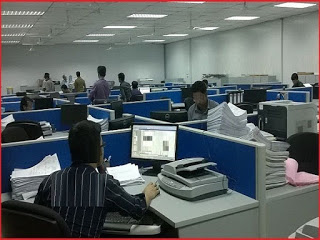There is a close relation between merchandisers and sampling section in the apparel industry. In fashion or buying house, sampling section is known as product development section. Merchandisers have to involve in every stage in product development. Usually, there is a separate department in the apparel industry to do product development which is handled by design section. But merchandiser has to play a vital role in product development if design section exists or not in any garment industry. Merchandisers have to accomplish bunch of duties during product development, and those are listed below:

1) Deal with buyers or their representatives to accomplish the mission and vision. Make query on their product line and request them to provide those items design, worksheet, color-way, fabric and accessories details that are going to be used in next seasons. It would be better if you can collect reference sample from a buyer. It will help you to track their instructions.
2) After review, the spec sheet/tech-pack/worksheet and product line then forward it to pattern maker to make a new pattern for sample making.
3) Sit with sample master about the design and buyers requirements mentioned in the worksheet and describe him precisely what they have to do. If any unclear point found from the discussion, please write down it in a paper then ask the buyer to make it clear.
4) Meantime merchandiser has to check all other necessary trims price and fabric’s price. Prepare bill of material (BOM) sheet and get ready to procure all sample items from local and abroad.
5) Fix estimate time of delivery (ETD) of sample and inform to buyer.
6) Examine fabric and trims quality and analyze their price, lead time etc. to make it competitive.
7) Get ready to do Lap dips and other lab test and send all lab reports, fabric swatch to buyer for approvals.
8) Please take extra care from sample development to production stage if value added processes like printing, embroidery or washing are required in any wearers.
9) Send all mock up like printing, embroidery, washing swatch, washing recipe etc. to buyer for approvals.
10) Arrange a table meeting in sample room before inserting the sample. Pattern maker, sample master, sample operator, sample quality has to present in this session. Check swatch card and start cutting.
11) Time to time visit sample room to look after sample development. Guide sample operator and pattern maker to execute buyer’s comments perfectly.
12) Once finished the sample, it should be checked by quality. Collect
finished sample and quality report from sample room.
13) Check finished sample thoroughly before dispatching to the buyer as you know better than other guys. Then get ready to send the samples to buyer’s office through reliable courier. Sample tag, QA report, measurement chart, and marker paper, technical comments need to be sent to the buyer along with samples for their easy assessment.
14) Once dispatch the sample, forward the tracking number to track the sample. Thus, the 1st proto sample making has accomplished by the supervision of a merchandiser.
15) Prepare cost sheet and submit it to buyer. Usually, buyer provides spec sheet to vendor to precede proto making as well as to submit competitive costing. Costing is one of the important parameters that used to submit buyer or higher management during proto stage. If your proposed price quotation pleased the respective buyer, then they will be interested in dealing with you.
16) Buyer will review the 1st proto sample once they receive it. After consideration of the sample, they will make some comments for improvement and request to make 2nd proto sample. Thus, a sample is ready to finished goods by providing long efforts of a merchandiser.
I have tried to explain the merchandiser’s role in product development by above article but not limit to those only. Merchandiser functions, roles, and responsibilities may differ from company to company or factory organogram and location.
You may like: How to be a retail merchandiser!
 1) Deal with buyers or their representatives to accomplish the mission and vision. Make query on their product line and request them to provide those items design, worksheet, color-way, fabric and accessories details that are going to be used in next seasons. It would be better if you can collect reference sample from a buyer. It will help you to track their instructions.
1) Deal with buyers or their representatives to accomplish the mission and vision. Make query on their product line and request them to provide those items design, worksheet, color-way, fabric and accessories details that are going to be used in next seasons. It would be better if you can collect reference sample from a buyer. It will help you to track their instructions.



Leave a Reply
You must be logged in to post a comment.